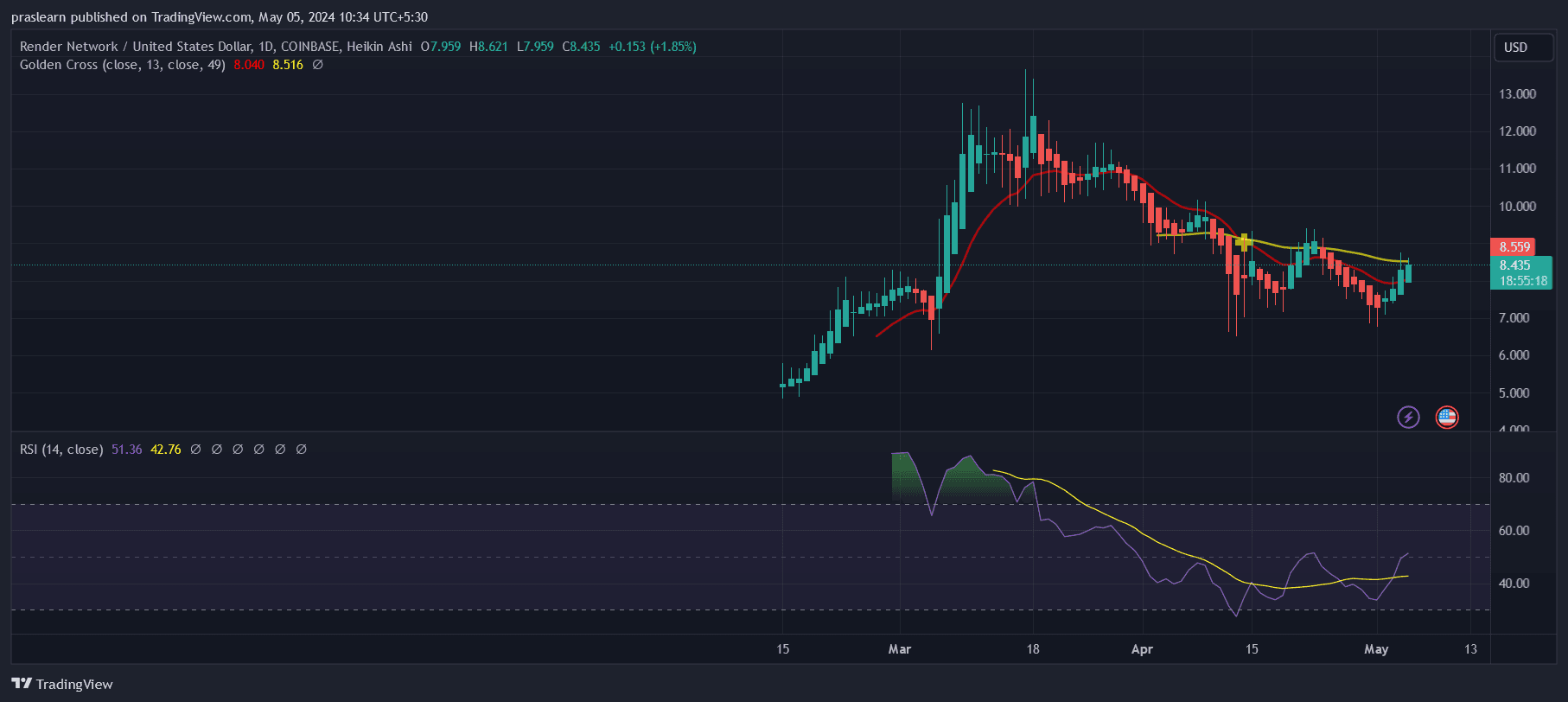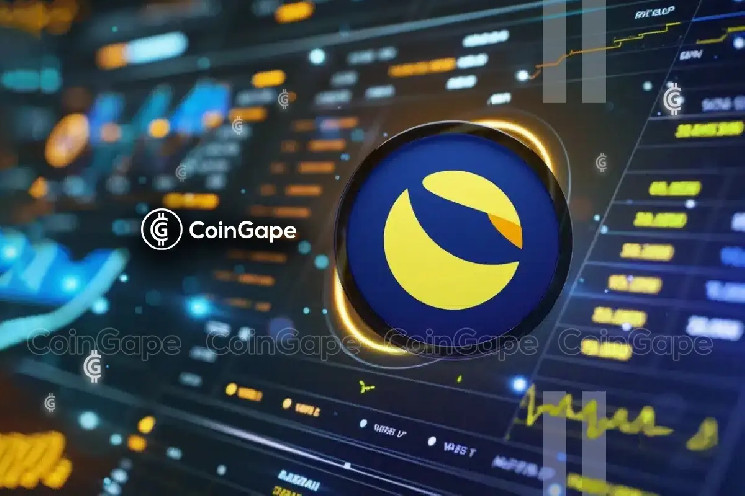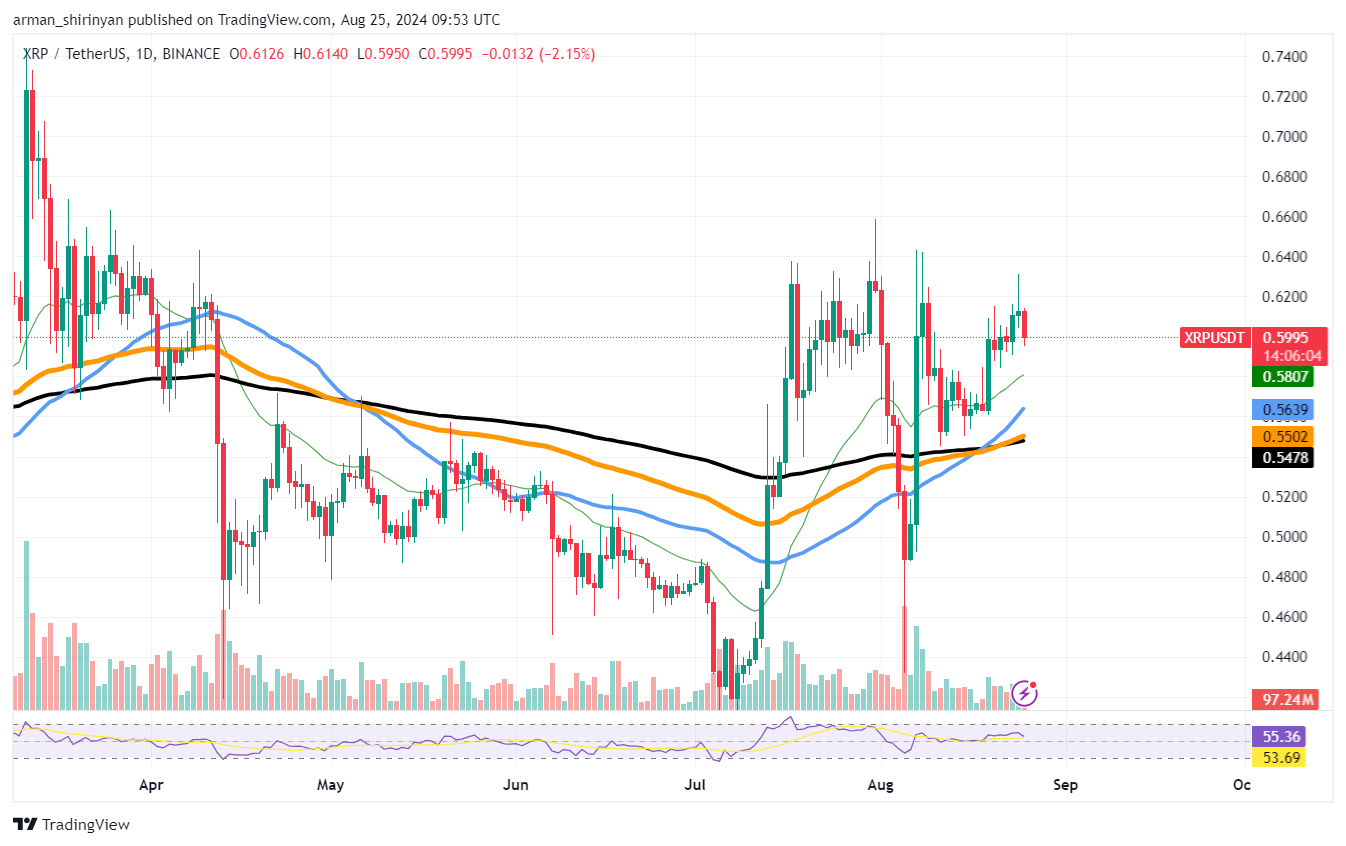The crypto market remains abuzz with excitement as numerous popular tokens continue to appreciate, delighting investors. This trend isn’t limited to conventional coins; AI tokens are also enjoying a winning streak. In this article, we try to explore the Render price prediction. Can RNDR reach $20? Let’s analyze the possibilities.
How has the Render (RNDR) Price Moved Recently?
RNDR/USD Daily Chart- TradingView
The current price of Render Token stands at $8.99, with a 24-hour trading volume of $365.89 million, a market capitalization of $3.32 billion, and a market dominance of 0.14%. Over the last 24 hours, the RNDR price has risen by 8.33%.
Render Token achieved its highest price of $13.57 on March 17, 2024, marking its all-time high. Conversely, its lowest price was recorded at $0.000115 on September 22, 2020, representing its all-time low. Since its all-time high (ATH), the lowest price observed was $6.49 (cycle low), and the highest price reached since then was $9.61 (cycle high).
The sentiment surrounding Render Token’s price prediction is currently bullish, and the Fear & Greed Index stands at 69 (Greed).
As for its supply metrics, the circulating supply of Render Token is 369.61 million RNDR out of a maximum supply of 536.87 million RNDR. The current yearly supply inflation rate is 1.57%, resulting in the creation of 5.70 million RNDR over the last year.
Why Render (RNDR) Price is Rising?
Render Network is making significant strides in the AI industry. Collaborations with projects such as Stability AI demonstrate the platform’s dedication to enhancing and streamlining AI workflows. This strategic partnership and focus on improving AI processes could potentially drive Render Network’s price higher.
In addition to its core rendering capabilities, Render Network is poised to revolutionize Artificial Intelligence (AI) applications. Training complex AI models, particularly those focused on image or video generation, often demands extensive computational resources. Render Network’s distributed GPU power offers a solution to accelerate this training process significantly.
Moreover, after training, many AI models require substantial computing power for inference tasks. Render Network provides a cost-effective and scalable platform for conducting these inference operations efficiently.
Furthermore, certain AI applications benefit from distributing tasks across multiple machines, a strategy that aligns perfectly with Render Network’s architecture. This approach maximizes efficiency and scalability, making Render Network an ideal choice for AI developers seeking powerful and flexible computing resources.
Will RNDR Price Reach $20?
Based on the analysis of Render’s performance and market trends, the question of whether RNDR will reach $20 is intriguing yet nuanced. Over the past year, Render Token has demonstrated exceptional growth, with its price surging by an impressive 319%. This significant increase not only showcases investor interest but also underscores the platform’s potential within the crypto market.
Moreover, Render Token’s outstanding performance places it among the top 14% of the top 100 crypto assets, outperforming major players like Bitcoin and Ethereum over the same period. This suggests growing confidence and adoption of Render’s unique value proposition.
From a technical perspective, Render Token is trading above its 200-day simple moving average, indicating sustained upward momentum. This bullish trend, coupled with Render’s high liquidity supported by its substantial market capitalization, reflects a strong foundation for further price appreciation.
Considering Render’s manageable yearly inflation rate of 1.57%, the token’s scarcity could drive increased demand, especially given its robust utility in supporting AI workflows and resource-intensive tasks.
Render Token’s impressive growth trajectory, strong technical indicators, and strategic positioning within the AI sector suggest that reaching and potentially surpassing this milestone could be possible over the medium term, barring unforeseen market shifts or broader economic factors.







